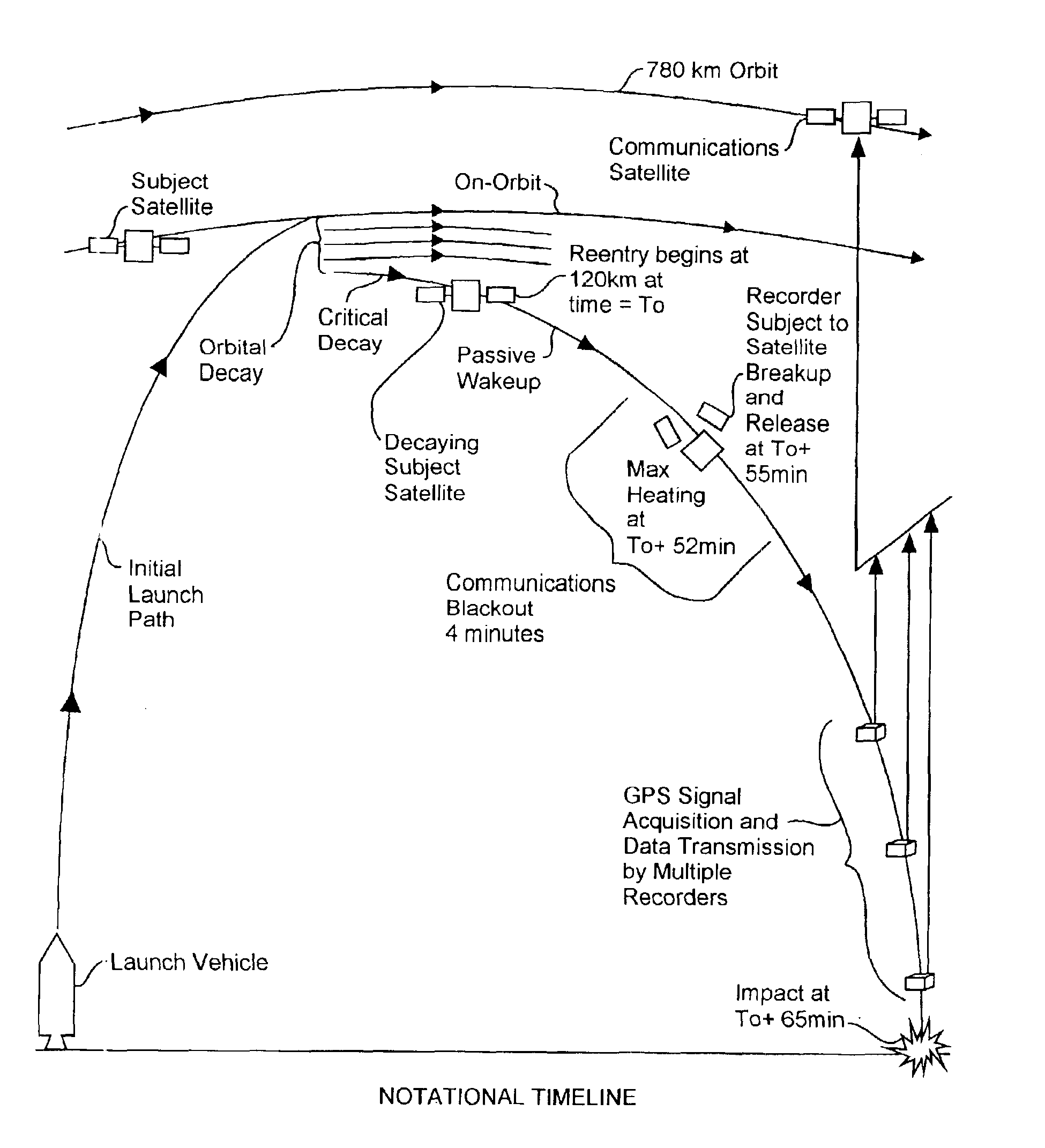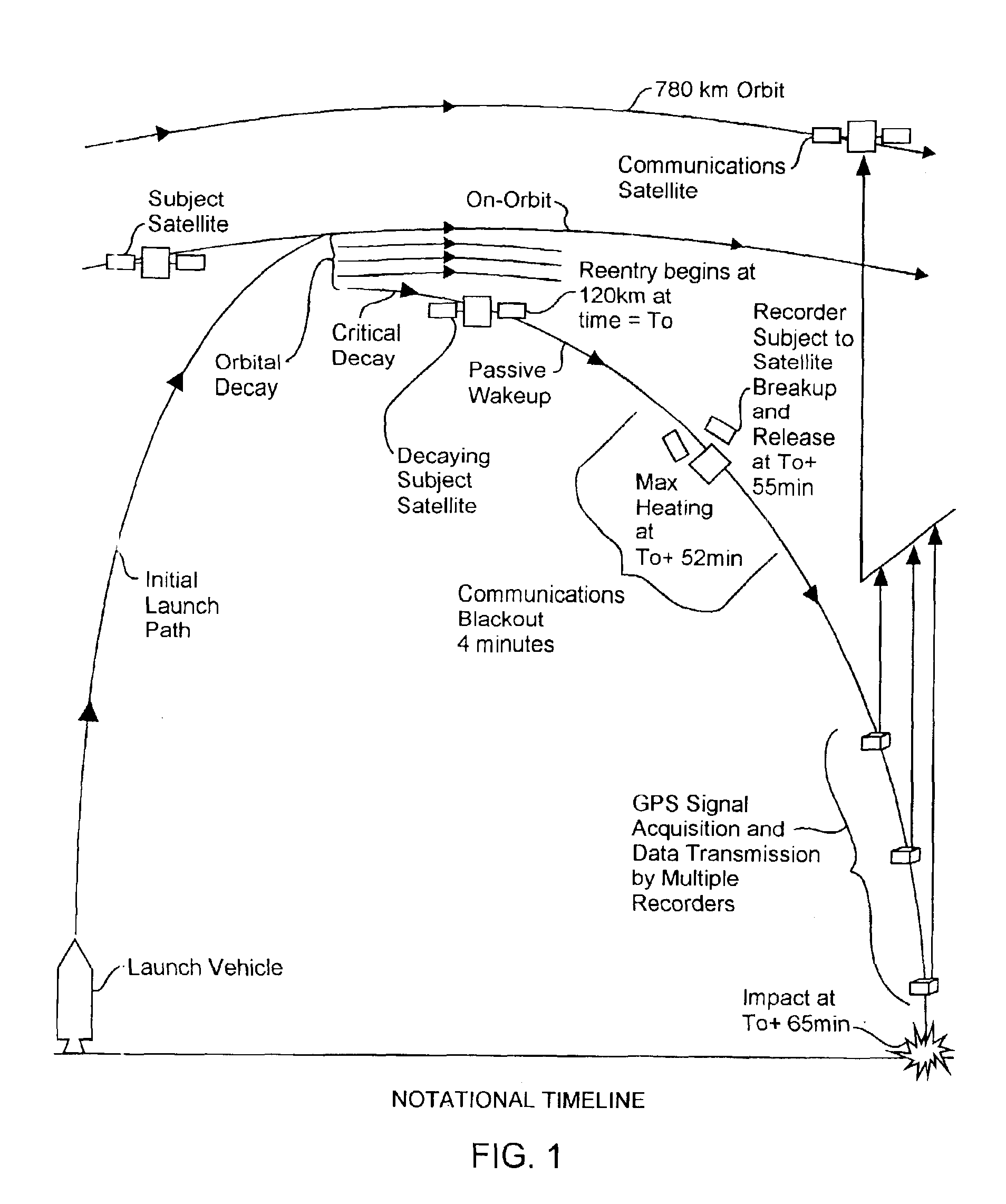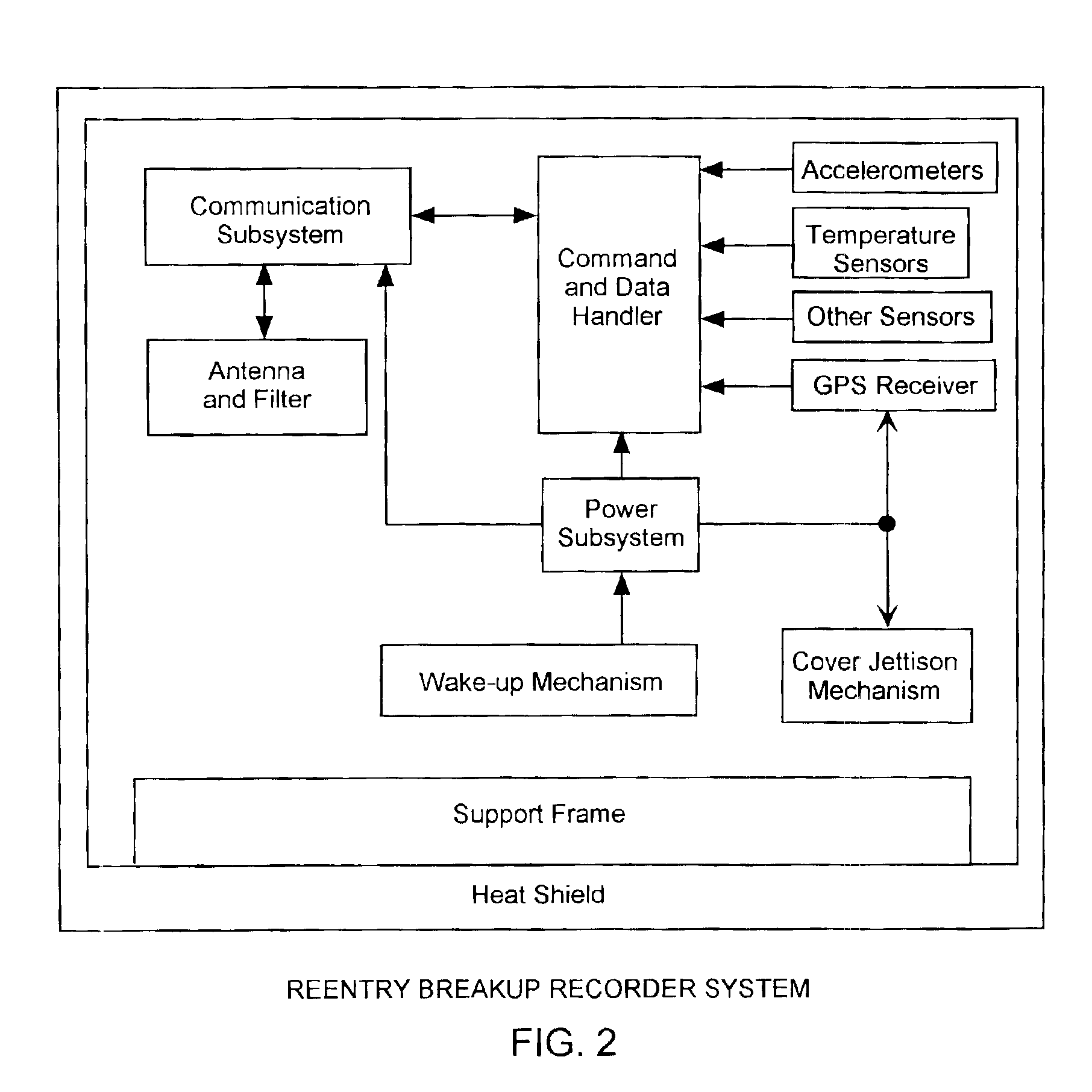Spacecraft reentry breakup recorder
a recorder and spacecraft technology, applied in the field of spacecraft monitoring systems, can solve problems such as black box damage, beacons may not be effective, and spacecraft may not be able to reenter the earth,
- Summary
- Abstract
- Description
- Claims
- Application Information
AI Technical Summary
Benefits of technology
Problems solved by technology
Method used
Image
Examples
Embodiment Construction
[0017]An embodiment of the invention is described with reference to the figures using reference designations as shown in the figures. Referring to FIG. 1, a launch vehicle is launched through an initial launch path to place a subject satellite on orbit. The subject satellite is equipped with one or more breakup recorders. One or more reentry breakup recorders are preferably attached to various support structures within the host subject satellite. The recorder preferably lies operationally dormant for months or years while the host subject spacecraft is in operational use. After some time of operational use, the on-orbit subject satellite experiences orbital decay where the orbit altitude continuously decreases. At a critical time, the on-orbit subject satellite enters into a critical orbital decay of the orbit as a decaying subject satellite. At a reentry time, designated at time zero to, the decaying subject satellite becomes a reentering subject satellite at a predetermined altitu...
PUM
 Login to View More
Login to View More Abstract
Description
Claims
Application Information
 Login to View More
Login to View More - R&D
- Intellectual Property
- Life Sciences
- Materials
- Tech Scout
- Unparalleled Data Quality
- Higher Quality Content
- 60% Fewer Hallucinations
Browse by: Latest US Patents, China's latest patents, Technical Efficacy Thesaurus, Application Domain, Technology Topic, Popular Technical Reports.
© 2025 PatSnap. All rights reserved.Legal|Privacy policy|Modern Slavery Act Transparency Statement|Sitemap|About US| Contact US: help@patsnap.com



